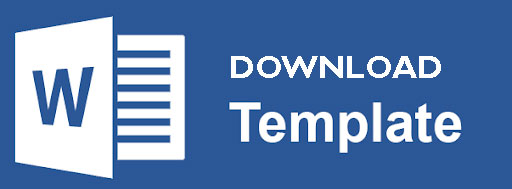Pendeteksian Sumber Air dalam Tanah untuk Memenuhi Kebutuhan Air Domestik di Desa Hargomulyo, Kecamatan Gedangsari, Kabupaten Gunungkidul
Abstrak
Kabupaten Gunungkidul, khususnya Desa Hargomulyo, merupakan salah satu desa yang terdampak kemarau panjang tahun ini. Di desa ini terjadi permasalahan berupa kesulitan mendapatkan sumber air bersih. Oleh karena itu, penelitian ini memiliki tujuan dalam perkiraan potensi sumber daya air tanah di Desa Hargomulyo, yang selanjutnya dapat digunakan sebagai pedoman untuk melakukan pengeboran sehingga dapat memenuhi kebutuhan air domestik di desa tersebut. Metode yang digunakan dalam penelitian ini adalah metode Vertical Electrical Sounding (VES) dan metode elektromagnetik (EM) untuk mengetahui potensi air tanah, serta mengacu pada SNI 6728:1:2015 tentang penyusunan neraca spasial sumber daya alam untuk mengetahui kebutuhan air domestik. Metode VES dilakukan di Dusun Jatibungkus dan Mangli, sedangkan metode EM dilakukan di Dusun Suruh. Metode VES yang telah dilakukan tidak mendapatkan sumber air tanah, sedangkan melalui metode EM didapatkan sumber air tanah dengan debit 4.920 liter/jam. Kebutuhan air domestik di Desa Hargomulyo sebesar 441.900 liter/hari. Desa Hargomulyo memiliki topografi yang didominasi wilayah perbukitan sehingga metode geolistrik kurang efektif dilakukan di wilayah tersebut. Metode geolistrik hanya mendeteksi material batuan yang terdapat di bawah tanah, sedangkan di Desa Hargomulyo air tanah tersimpan di rekahan batuan sehingga metode geolistrik sulit untuk mendeteksi air tanah tersebut. Dalam mengatasi hal tersebut, dapat digunakan metode elektromagnetik. Metode ini cukup efektif jika dilakukan di medan yang didominasi wilayah perbukitan. Hasil perkiraan air tanah menggunakan metode EM dapat memenuhi sebagian kebutuhan air domestik di Desa Hargomulyo. Apabila nantinya dilakukan pendeteksian air lagi menggunakan metode ini, kebutuhan air domestik dapat terpenuhi dan permasalahan kekurangan air yang terjadi di Desa Hargomulyo dapat teratasi.
Referensi
Adji, T. N. & Febriarta, E. (2023). Laporan deteksi sumber air tanah dengan elektromagnetik (EM) di Kalurahan Karangtengah dan Serpeng, Gunungkidul. Fakultas Geografi. Universitas Gadjah Mada.
Asdak, C. (2010). Hidrologi dan pengelolaan daerah aliran sungai. Gadjah Mada University Press.
Astani, L. P., Supraba, I., & Jayadi, R. (2022). Analisis kebutuhan air domestik dan non domestik di Kabupaten Kulonprogo, Daerah Istimewa Yogyakarta. Teknologi Sipil: Jurnal Ilmu Pengetahuan dan Teknologi, 5(2), 34—41.
Fitrianto, T. N., Supriyadi, S., Taufiq, U. A., Mukromin, T. M., & Wardana, A. P. (2018). Identifikasi potensi air tanah menggunakan metode geolistrik resistivitas konfigurasi schlumberger di Kelurahan Bapangsari Kecamatan Bagelen Kabupaten Purworejo. Jurnal Fisika Flux: Jurnal Ilmiah Fisika FMIPA Universitas Lambung Mangkurat, 15(2), 100—104.
Karya, D. P. U. C. (1996). Pengembangan kawasan perkotaan, kawasan perdesaan. Dirjen Pekerjaan Umum.
Mohamaden, M. I. I. (2016). Delineating groundwater aquifer and subsurface structures by using geoelectrical data: Case study (Dakhla Oasis, Egypt). NRIAG Journal of Astronomy and Geophysics, 5(1), 247—253.
Purnama, S. & Marfai, M. A. (2012). Saline water intrusion toward groundwater: Issues and its control. Journal of Natural Resources and Development, 2, 25—32.
Santosa, L.W. & Adji, T.N. (2014). Karakteristik akuifer dan potensi air tanah graben Bantul. Gadjah Mada University Press.
Santosa, L. W. (2004). Studi akuifer pada bentanglahan kepesisiran Kabupaten Kulonprogo Daerah Istimewa Yogyakarta. Majalah Geografi Indonesia, 18(2), 117—133.
Standar Nasional Indonesia (SNI) 6728.1:2015. (2015). Penyusunan neraca air spasial sumber daya alam bagian 1 sumber daya air. Badan Standarisasi Nasional (BSN).
Triatmodjo, B. (2010). Hidrologi terapan. Gadjah Mada University Press.
Wada, Y., Flörke, M., Hanasaki, N., Eisner, S., Fischer, G., Tramberend, S., Satoh, Y., Van Vliet, M. T. H., Yillia, P., Ringler, C., & Wiberg, D. (2016). Modeling global water use for the 21st century: The water futures and solutions (WFaS) initiative and its approaches. Geoscientific Model Development, 9(1), 175—222.
Copyright (c) 2024 Jurnal Pengabdian, Riset, Kreativitas, Inovasi, dan Teknologi Tepat Guna

This work is licensed under a Creative Commons Attribution-ShareAlike 4.0 International License.









